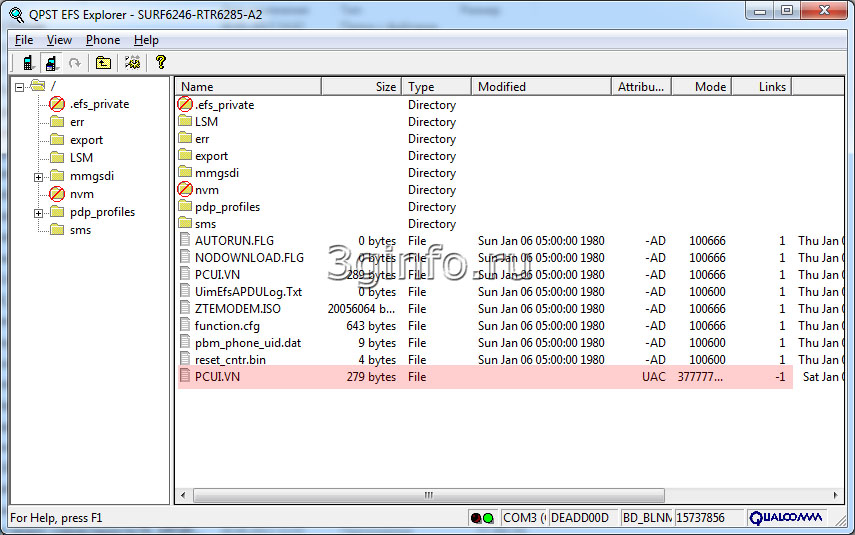After connection open QPST EFS Explorer and go to /nv/itemfiles/rfnv and find file 00028874. Copy this file to your computer. Scat (Qualcomm) This method works with Linux, Mac and Windows. This is scat-fork what save UE Capability Information message and 0xB0CD hardware combos to qmdl file. This work example Samsung devices with Qualcomm-modems. EFS Explorer를 실행합니다. ESN 이 0 으로 되어 있는 포트를 선택하여 오픈합니다. Mi 9 efs 파일 덮어쓰기 QPST EFS Explorer 창이 열리면(폰의 파일 구조가 나타납니다.) 다른 부분은 절대 삭제하거나 변경하지 마시고 아래 내용만 따라 하시면 됩니다. EFS Explorer 창에서. QPST Flash Tool is an application that allows you to flash stock firmware on Qualcomm Smartphone and tablet devices. It will enable you to install the latest software packages on your device. Now, almost all Android devices come with Qualcomm chipset. The Qualcomm Flash Tool can be used to directly download and flash the latest collection.
In eHRPD network, device equipped with Qualcomm chipset uses profile information to attach to PDN.
Below are details on how to configure profile files and make data call via QMICM:
1. Open Qualcomm QPST configuration software, select EFS Explorer:
2. Select correct Port and click OK:
3. Wait couple seconds and you will see the file system inside device. Click on application_specific_profiles, you should see some profile files. The naming convention is “profile” followed by an underscore, followed by the profile ID, e.g., a file named profile_101.txt uses profile ID 101:
Note: Some devices (e.g. Qualcomm FFA) have profiles 101-107. Some devices (e.g. Pantech UML290) have 5 profiles as shown in above picture, and profile_000 is used by default if don't specify a 3GPP2 Profile ID in QMICM during call setup.
4. Pay attention to Profile ID, APN_String and PDN_IP_Version_Type. These values will be used later during call setup.

5. If you need modify the profiles, following are the instructions:
a) drag the profile onto desktop, modify, and then drag back to EFS window to replace the old profiles.
b) Reboot device.
c) Open EFS Explorer again, ensure your change to these profiles take effect. And then close EFS Explorer.
6. Open QMI Connection Manager, select an interface from the Select Device drop-down list. If the correct USB drivers are installed, one or more devices should appear in this list. Select the checkbox ahead of Technology Preference and set it to 3GPP2. Select the checkbox ahead of IP Family Pref and choose the IP type:
Note:
a) If you don't specify 3GPP2 Profile ID, profile_000.txt will be used by default.
Qpst Ef-s Explorer
b) For some devices, 3GPP2 Profile ID is mandatory, otherwise you will see an exception after click CONNECT. This mostly happens when device doesn't have a default profile file.
Qpst Efs Explorer Imei
7. Click CONNECT to bring up the call. Once the call is connected, the button will change to DISCONNECT. Click DISCONNECT when you are ready to disconnect the call.